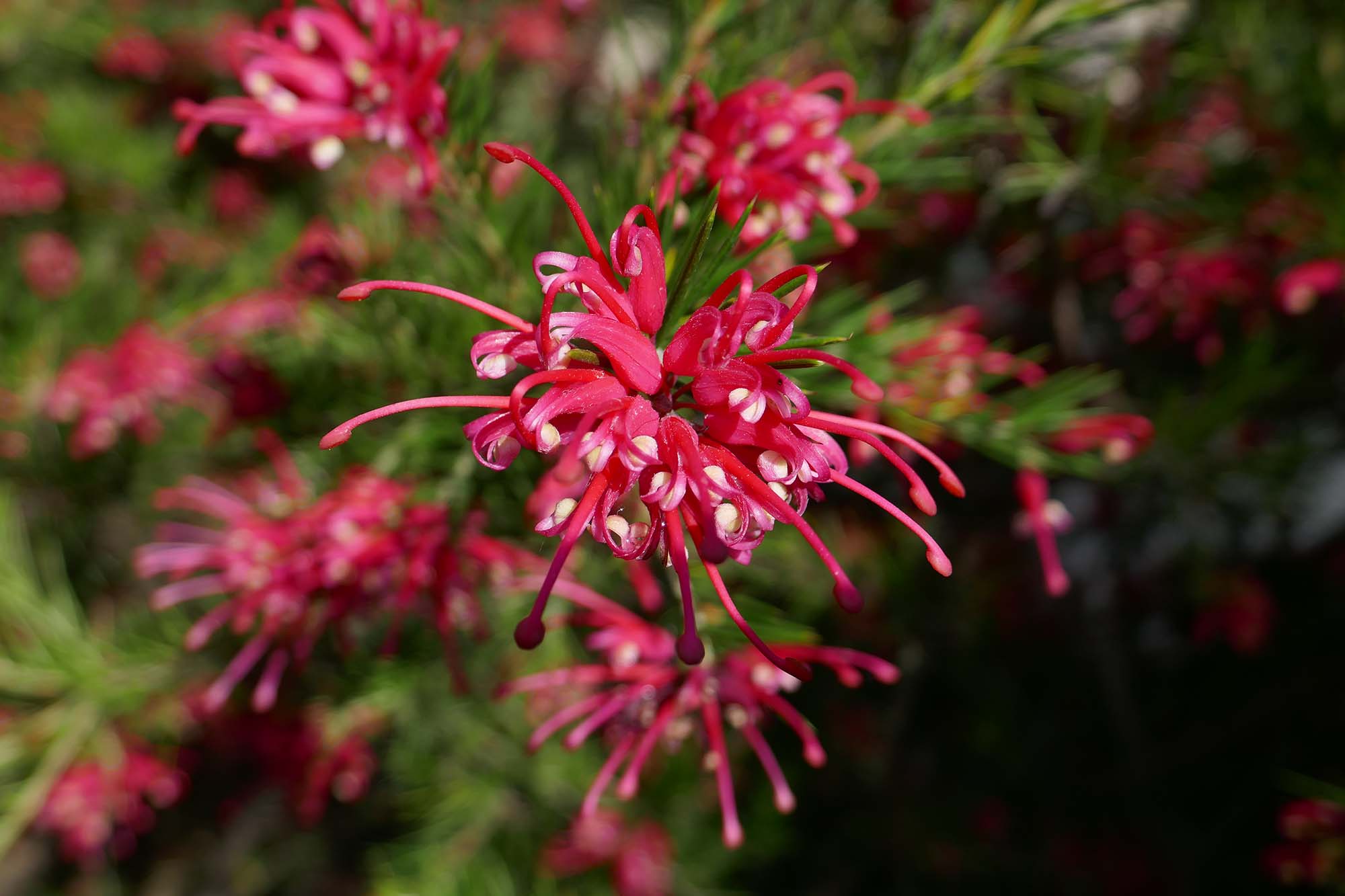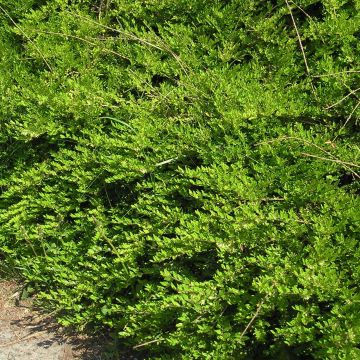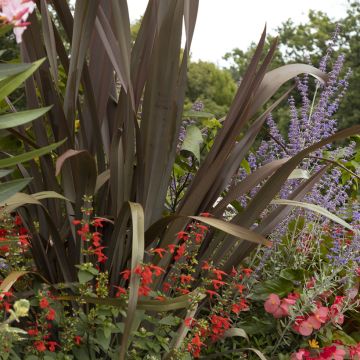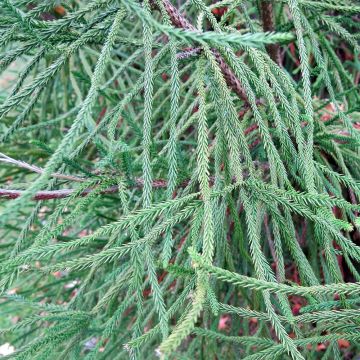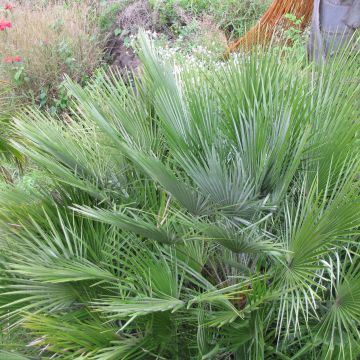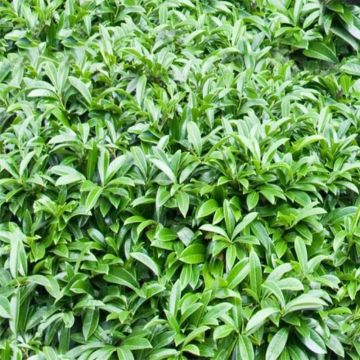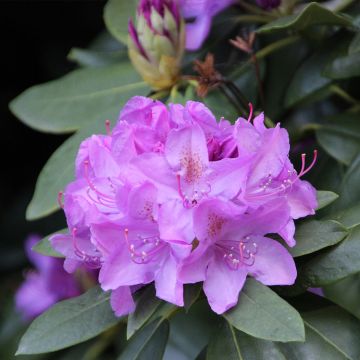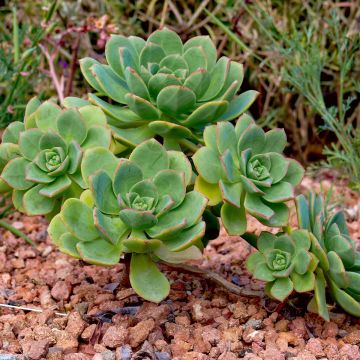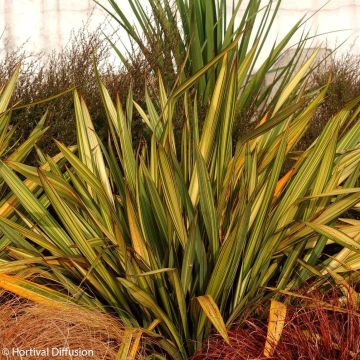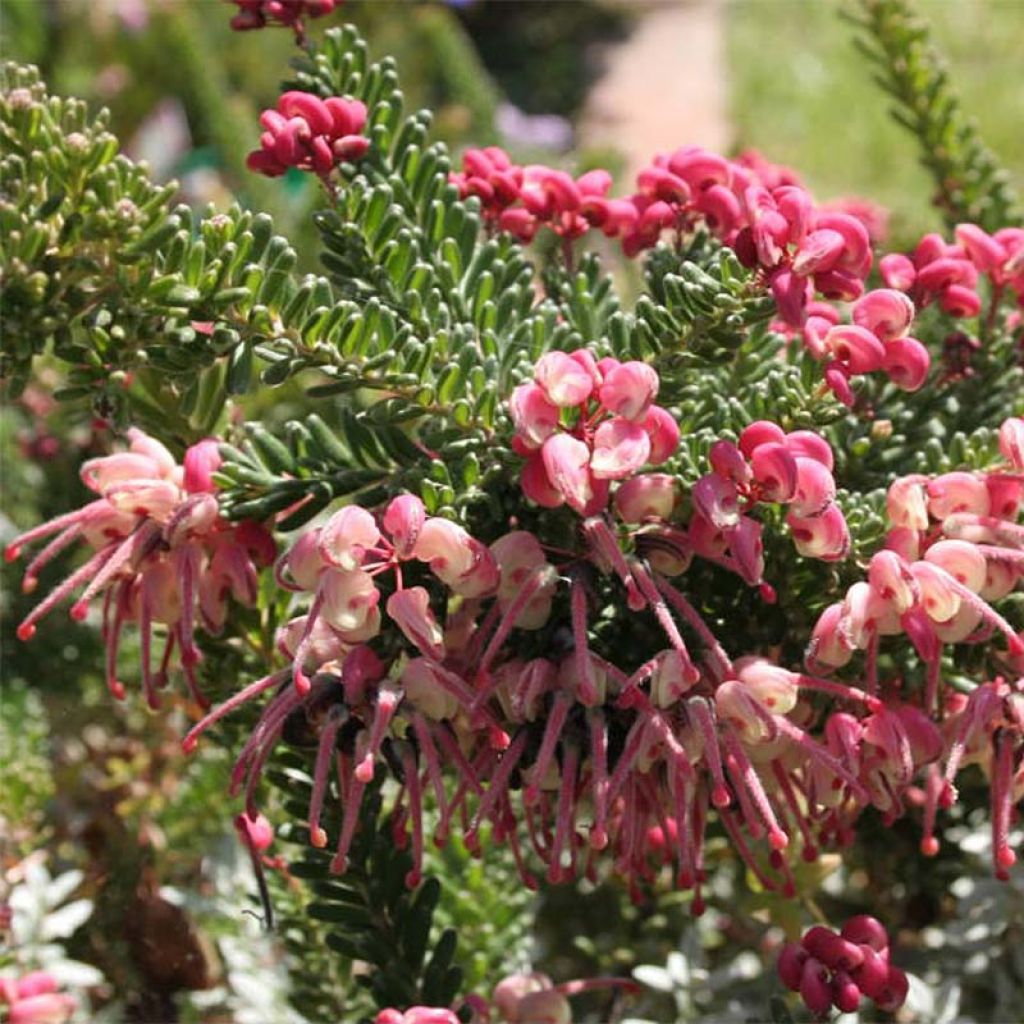

Grevillea lanigera Mount Tamboritha - Grévilléa laineux.


Grevillea lanigera Mount Tamboritha
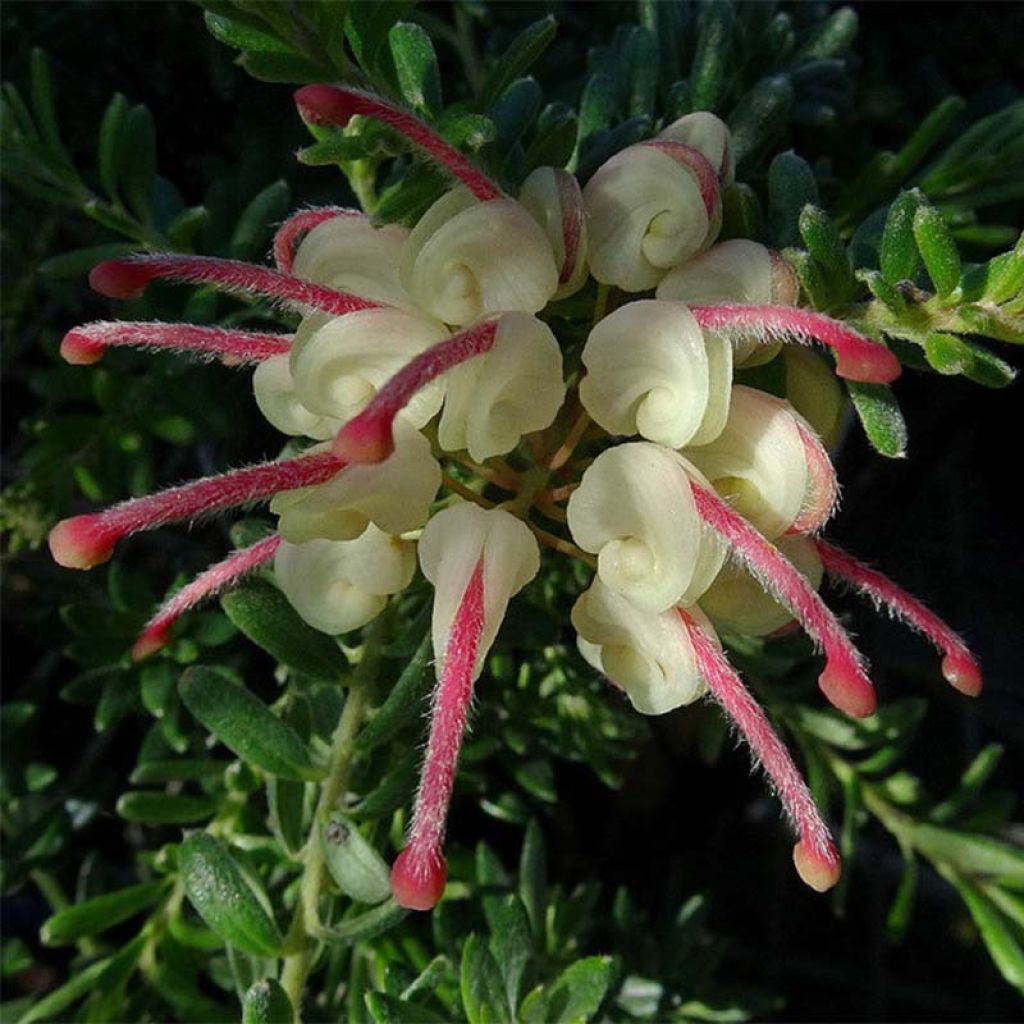

Grevillea lanigera Mount Tamboritha - Grévilléa laineux.
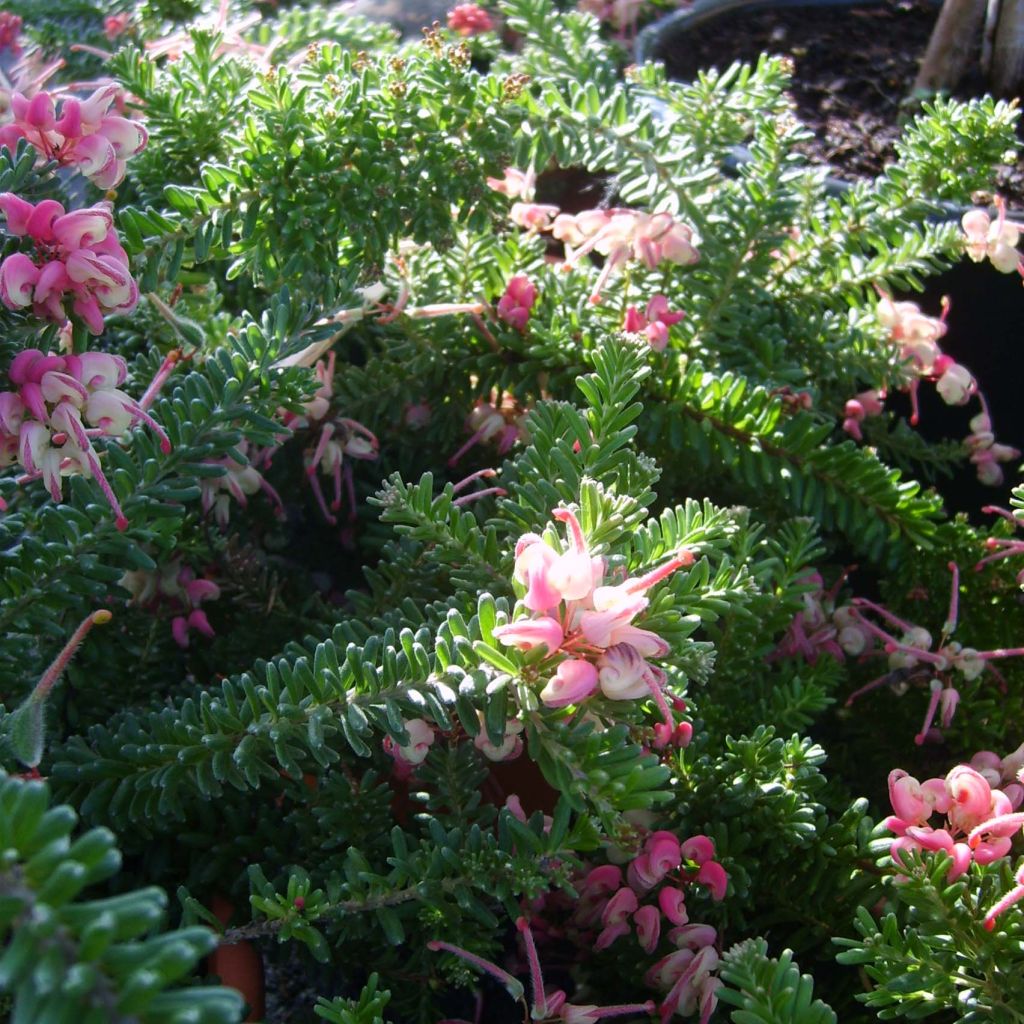

Grevillea lanigera Mount Tamboritha - Grévilléa laineux.
Grevillea lanigera Mount Tamboritha
Grevillea lanigera Tamboritha
Woolly Grevillea, Mount Tamboritha Grevillea
Planted upon arrival, this Grevillea has withstood a mild winter and an extremely hot, dry summer. I think we'll need to wait another good year to get a proper idea of its hardiness.
Annick, 15/10/2025
Special offer!
Receive a €20 voucher for any order over €90 (excluding delivery costs, credit notes, and plastic-free options)!
1- Add your favorite plants to your cart.
2- Once you have reached €90, confirm your order (you can even choose the delivery date!).
3- As soon as your order is shipped, you will receive an email containing your voucher code, valid for 3 months (90 days).
Your voucher is unique and can only be used once, for any order with a minimum value of €20, excluding delivery costs.
Can be combined with other current offers, non-divisible and non-refundable.
Home or relay delivery (depending on size and destination)
Schedule delivery date,
and select date in basket
This plant carries a 24 months recovery warranty
More information
We guarantee the quality of our plants for a full growing cycle, and will replace at our expense any plant that fails to recover under normal climatic and planting conditions.
Does this plant fit my garden?
Set up your Plantfit profile →
Description
Grevillea lanigera 'Mount Tamboritha', unlike the usually bushy grevilleas planted in gardens, is a creeping bush that develops as ground cover. It first captivates with its small, dense, almost round, greyish-green foliage, with a slightly woolly appearance which remains decorative all year round. Its pink and cream flowering, from late winter to spring, brings a real touch of softness to flower beds and rockeries at a time of year when flowering shrubs are still rare. Fast-growing, drought-resistant, and low-maintenance, it is an easy plant to grow in well-drained sandy or acidic soil and in mild climates. Outside of mild regions it can be grown in a wider than tall container, to be stored in a cold greenhouse during winter.
Grevillea lanigera is a bush from the proteaceae family native to the mountains of southeastern Australia. The 'Mount Tamboritha' variety, sometimes called G.lanigera compacta, is believed to be a spontaneous form of this plant found on the coast of the state of Victoria. Particularly ornamental, it has been widely planted in Australia. Many Grevilleas are pioneering species in their natural environment: they tolerate fairly poor but non-chalky dry soils, and require full sun to flower. It reaches maturity in 3-4 years, this prostrate bush will typically reach 15-25cm (5.9-9.8 in) in height and have a spread of 1.5m (4 ft 11 in). Its small narrow leaves have recurved edges, giving them a somewhat cylindrical appearance. They are covered in woolly hairs, especially on the underside, which gives them their ash-green colour. Flowering usually occurs from February to June, without interruption, with a peak in March-April. The flowers are a delicate pink, washed with bright pink, sometimes red and white-cream. They have no petals and are composed of petal-like styles curled upon themselves and long recurved stamens, grouped in small erect clusters. The root system of this plant is very dense near the surface, which allows it to adapt to nutrient-poor soils and summer drought. According to some observers, the 'Mount Tamboritha' variety seems to be more resistant to Phytophthora attacks than the species.
Grevillea 'Mount Tamboritha' is not difficult to grow as long as the conditions are suitable. This bush requires no maintenance and can go without watering in the summer once established. It can be grown in a coastal garden spared by strong frosts, but in a light, well-draining, and preferably acidic soil. Particularly well-suited to the Mediterranean climate, it forms a charming ground cover among the stones of a large rockery, and creates a lovely flowery mantle above a low wall. In this setting, it can be accompanied by creeping rosemary, Iberis sempervirens, with their respective pink, blue, and white flowers creating a beautiful pastel scene from the first sunny days. A Callirhoe involucrata, an Erigeron glaucus 'Sea Breeze' and an Artemisia caucasica, flowering slightly staggered, will take over until summer. In an exotic or Mediterranean garden, it can be paired with proteas, Agave, Aloe, creeping sedums, Crassula, Delosperma, and many others. Growing it in a container allows for controlling the composition of the substrate and overwintering the bush in a cold greenhouse or a very bright and minimally heated conservatory.
Grevillea lanigera Mount Tamboritha in pictures
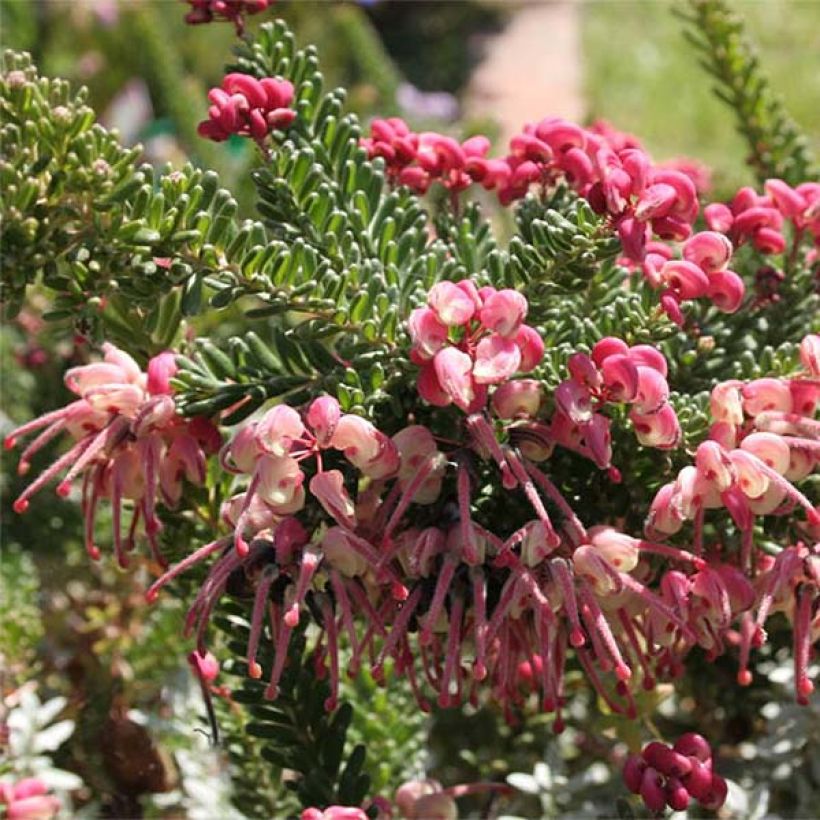

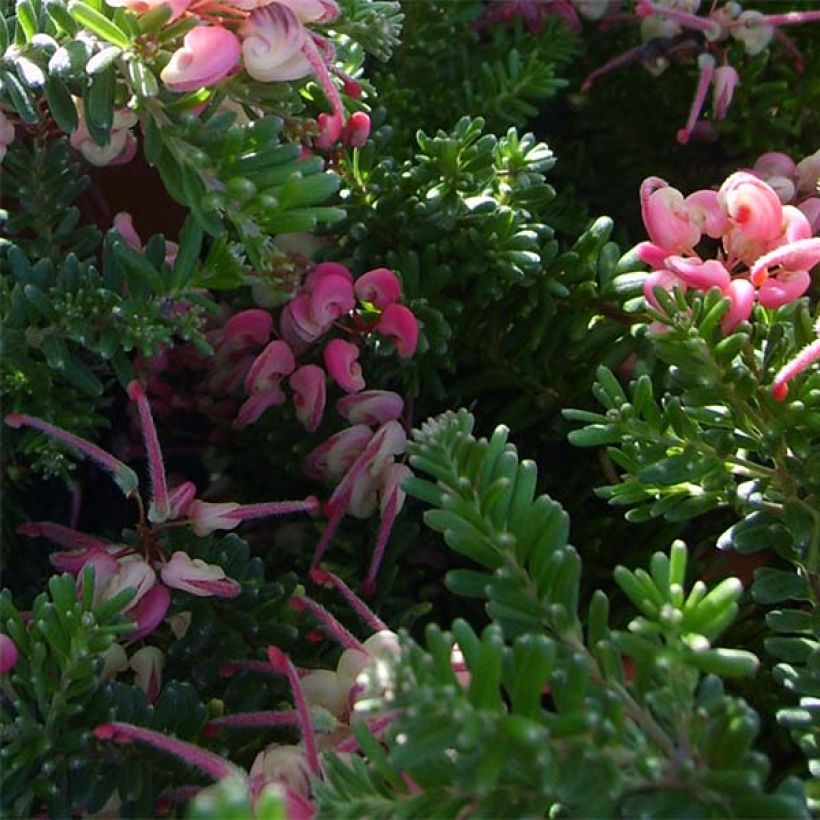

Plant habit
Flowering
Foliage
Botanical data
Grevillea
lanigera
Tamboritha
Proteaceae
Woolly Grevillea, Mount Tamboritha Grevillea
Australia
Planting and care
Grevillea Tamboritha is best planted in spring, after the last frost. It prefers soil with a pH ranging from acidic to neutral, sandy, loamy, poor, and very well-drained. The presence of limestone in the soil causes yellowing of the foliage, chlorosis, which weakens the bush until it eventually dies. This condition can be corrected by regularly adding chelated iron. In regions where the soil and subsoil are limestone, it is recommended to dig a large hole measuring 60 cm (23.6 in) in all directions, filled with ericaceous soil and sand. Growing in a pot allows for better control of the substrate's nature and allows the plant to be stored frost-free in a borderline hardiness zone (up to -10/-11°C (14/12.2 °F) for a well-established plant). In a pot, use a lightweight, well-drained potting mix that remains moist. We recommend the following mixture: 60% pine bark, 20% coarse river sand, 10% fine river sand, and 10% clay soil for its water-retaining capacity. The pH should be 7 or less.
Grevilleas are drought-resistant once well-established: however, monitor watering during the first two years in summer and always in pots. In the ground, it appreciates having a thick mulch. Use wood chips or grass clippings. It is recommended to use a fertilizer very low in phosphorus, as it can reduce the bush's drought resistance by destroying the thick root hairs that develop just below the soil surface. An N-P-K fertilizer with a ratio of 18-2-10 is well-suited.
Insects and diseases:
Grevilleas can develop black leaf spots, caused by a rarely fatal fungus: a fungicidal treatment will eliminate it.
Collar rot can also be observed, a deadly disease caused by fungi that develop in moist and warm soil. Avoid burying the plant's collar, as it will allow for better air circulation. Avoid watering too often in hot and dry weather, let the soil dry out between waterings.
Phytophthora (cinnamomi), a disease also caused by a fungus, affects many dryland plants. The parasite destroys the roots during excessively rainy winters. Prevention is crucial, as the disease is almost impossible to eradicate: ensure that the soil drainage is perfect, remove excess water from the saucer placed under the pot, and remove dead or diseased parts.
Planting period
Intended location
Care
Planting & care advice
-
, onOrder confirmed
Reply from on Promesse de fleurs
Similar products
Haven't found what you were looking for?
Hardiness is the lowest winter temperature a plant can endure without suffering serious damage or even dying. However, hardiness is affected by location (a sheltered area, such as a patio), protection (winter cover) and soil type (hardiness is improved by well-drained soil).

Photo Sharing Terms & Conditions
In order to encourage gardeners to interact and share their experiences, Promesse de fleurs offers various media enabling content to be uploaded onto its Site - in particular via the ‘Photo sharing’ module.
The User agrees to refrain from:
- Posting any content that is illegal, prejudicial, insulting, racist, inciteful to hatred, revisionist, contrary to public decency, that infringes on privacy or on the privacy rights of third parties, in particular the publicity rights of persons and goods, intellectual property rights, or the right to privacy.
- Submitting content on behalf of a third party;
- Impersonate the identity of a third party and/or publish any personal information about a third party;
In general, the User undertakes to refrain from any unethical behaviour.
All Content (in particular text, comments, files, images, photos, videos, creative works, etc.), which may be subject to property or intellectual property rights, image or other private rights, shall remain the property of the User, subject to the limited rights granted by the terms of the licence granted by Promesse de fleurs as stated below. Users are at liberty to publish or not to publish such Content on the Site, notably via the ‘Photo Sharing’ facility, and accept that this Content shall be made public and freely accessible, notably on the Internet.
Users further acknowledge, undertake to have ,and guarantee that they hold all necessary rights and permissions to publish such material on the Site, in particular with regard to the legislation in force pertaining to any privacy, property, intellectual property, image, or contractual rights, or rights of any other nature. By publishing such Content on the Site, Users acknowledge accepting full liability as publishers of the Content within the meaning of the law, and grant Promesse de fleurs, free of charge, an inclusive, worldwide licence for the said Content for the entire duration of its publication, including all reproduction, representation, up/downloading, displaying, performing, transmission, and storage rights.
Users also grant permission for their name to be linked to the Content and accept that this link may not always be made available.
By engaging in posting material, Users consent to their Content becoming automatically accessible on the Internet, in particular on other sites and/or blogs and/or web pages of the Promesse de fleurs site, including in particular social pages and the Promesse de fleurs catalogue.
Users may secure the removal of entrusted content free of charge by issuing a simple request via our contact form.
The flowering period indicated on our website applies to countries and regions located in USDA zone 8 (France, the United Kingdom, Ireland, the Netherlands, etc.)
It will vary according to where you live:
- In zones 9 to 10 (Italy, Spain, Greece, etc.), flowering will occur about 2 to 4 weeks earlier.
- In zones 6 to 7 (Germany, Poland, Slovenia, and lower mountainous regions), flowering will be delayed by 2 to 3 weeks.
- In zone 5 (Central Europe, Scandinavia), blooming will be delayed by 3 to 5 weeks.
In temperate climates, pruning of spring-flowering shrubs (forsythia, spireas, etc.) should be done just after flowering.
Pruning of summer-flowering shrubs (Indian Lilac, Perovskia, etc.) can be done in winter or spring.
In cold regions as well as with frost-sensitive plants, avoid pruning too early when severe frosts may still occur.
The planting period indicated on our website applies to countries and regions located in USDA zone 8 (France, United Kingdom, Ireland, Netherlands).
It will vary according to where you live:
- In Mediterranean zones (Marseille, Madrid, Milan, etc.), autumn and winter are the best planting periods.
- In continental zones (Strasbourg, Munich, Vienna, etc.), delay planting by 2 to 3 weeks in spring and bring it forward by 2 to 4 weeks in autumn.
- In mountainous regions (the Alps, Pyrenees, Carpathians, etc.), it is best to plant in late spring (May-June) or late summer (August-September).
The harvesting period indicated on our website applies to countries and regions in USDA zone 8 (France, England, Ireland, the Netherlands).
In colder areas (Scandinavia, Poland, Austria...) fruit and vegetable harvests are likely to be delayed by 3-4 weeks.
In warmer areas (Italy, Spain, Greece, etc.), harvesting will probably take place earlier, depending on weather conditions.
The sowing periods indicated on our website apply to countries and regions within USDA Zone 8 (France, UK, Ireland, Netherlands).
In colder areas (Scandinavia, Poland, Austria...), delay any outdoor sowing by 3-4 weeks, or sow under glass.
In warmer climes (Italy, Spain, Greece, etc.), bring outdoor sowing forward by a few weeks.






























